
PM-3
I’ve always found single-shot rifles innately elegant and esthetically pleasing, especially the falling block design. The falling block includes a metal breechblock that rides in vertical grooves cut into the rifle action that is manipulated by a swinging underlever. Pulling the underlever tightly against the action lifts the sliding breechblock into place and seals the chamber for firing. Pull the underlever downward and the breechblock is lowered and the chamber is exposed to allow ejection/ extraction of the fired case and shoving the next round home. It is a simple but ultra-stout arrangement. Engaging the breechblock creates a solid “wall” of steel that doesn’t require lugs to lock the chamber solidly. It is an action type also used in heavy artillery firing shells as big as a man’s leg.
Famous falling-block actions include the American Sharps, Scottish Farquharson, 1890 Stevens, Winchester Model 1885 High Wall and the Ruger No. 1 (and similar pivoting-block rifles like Martinis and Ballards), just to offer some easy examples. Falling-block rifles served many militaries around the world until being replaced by faster-cycling bolt actions prior to World War I. For me, most of all they bring to mind buffalo hunters of frontier days.
This story is from the July - August 2021 edition of Rifle.
Start your 7-day Magzter GOLD free trial to access thousands of curated premium stories, and 8,500+ magazines and newspapers.
Already a subscriber ? Sign In
This story is from the July - August 2021 edition of Rifle.
Start your 7-day Magzter GOLD free trial to access thousands of curated premium stories, and 8,500+ magazines and newspapers.
Already a subscriber? Sign In
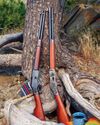
CIMARRON .32-20 Short Rifle & Carbine
In the heyday of Winchester Repeating Arms Company lever guns, it offered muskets, standard rifles, short rifles and saddle ring carbines.
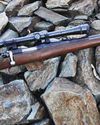
Remington's Model 722 and .222 Cartridge
It's easy enough to define what a varmint is, those pesky critters that tear up pastures, flower beds and all kinds of expensive crops people need for various reasons - most importantly, to make a living and/or something with which to feed themselves.

Coyote Bullets
What is Best for You?
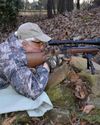
Remington's 5mm Rimfire Magnum
Shooting a Classic
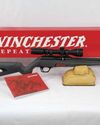
Winchester's New Wildcat
The Ultralight Rimfire Varmint Rifle
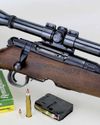
.223 Remington from .30-30 Winchester?
Multitasking for Varmints

LOADS FOR A .22 TCM
The .22 TCM first appeared commercially in 2012, chambered in a Rock Island Armory 1911-style handgun.
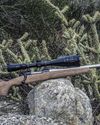
Everybody Loves Velocity
The 4,500-fps WSSM Project
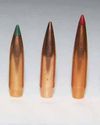
A BOLT-ACTION FRANCHI 224 VALKYRIE
Testing New Loads
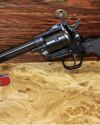
.22 Winchester Magnum Rimfire
Shooting Revolvers